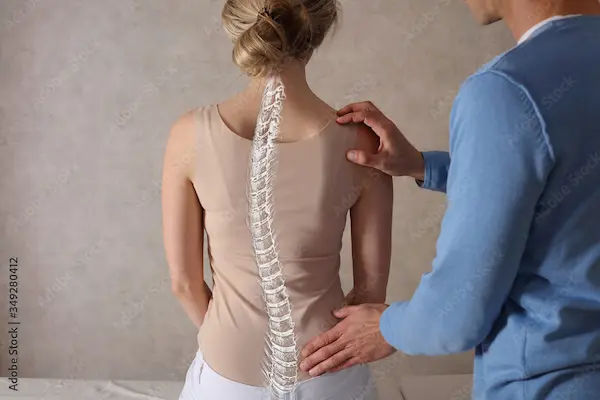Understanding Lumbago: Effective Back Pain Treatments & Prevention Tips
Discover effective treatments and prevention tips for lumbago. Get insights about how to manage lower back pain, improve posture, and adopt a healthier, pain-free lifestyle.

Written by Dr. Sonia Bhatt
Last updated on 3rd Jul, 2025

Introduction
Lower back pain is a common problem that affects millions of people worldwide. The condition, also referred to as lumbago, can cause severe discomfort and pain. The condition can be painful enough to make it hard for you to keep up with your daily life. Lumbago is primarily a sign of an underlying health issue, such as muscle strain, poor posture, or degenerative changes in the spine. And the condition isn’t solely a source of physical pain — it can affect your mental health as well. This makes addressing lumbago essential for anyone suffering from it.
Anatomy of the Lower Back
The lower back, or lumbar region, is a complex structure that supports much of the body’s weight while enabling flexibility and movement. Its components, including bones, muscles, and nerves, work together to maintain stability and protect the spine, making it a critical area of the body.
1. Structure and Function of the Lumbar Spine
The lumbar spine consists of five sturdy vertebrae (L1 to L5) that provide structural support and allow for movement. These vertebrae are separated by intervertebral discs, which act as cushions to absorb shock and reduce stress on the spine. The lumbar spine also houses spinal nerves that transmit signals between the brain and lower body, essential for mobility and sensation.
2. Gluteal Muscles and Their Role in Back Support
The gluteal muscles, including the gluteus maximus, medius, and minimus, are key to lower back support. They stabilise the pelvis, maintain posture, and reduce strain on the lumbar spine. Weak gluteal muscles can contribute to back pain.
3. Key Nerves and Their Impact on Back Pain
Nerves like the sciatic nerve originate in the lumbar spine and impact back pain when compressed or irritated, often causing discomfort in the lower back and legs.
Causes of Lumbago
A number of factors may play a role in causing Lumbago. Understanding these causes is essential for effective prevention and management, as many are linked to lifestyle and occupational habits.
Common Causes: Lower back pain often arises from issues such as muscle or ligament strain, herniated discs, arthritis, or spinal degeneration. Acute injuries, including improper lifting or sudden movements, are frequent culprits, leading to inflammation and discomfort.
Risk Factors: Factors such as ageing, obesity, and poor posture increase susceptibility to lumbago. Genetic predisposition, previous back injuries, and a sedentary lifestyle can also play a significant role in its development.
Lifestyle and Occupational Influences: Occupational habits, such as prolonged sitting, repetitive tasks, or heavy lifting, can place undue strain on the lower back. Similarly, lack of physical activity and inadequate workplace ergonomics often exacerbate back pain, highlighting the need for lifestyle modifications.
Symptoms Associated with Lumbago
Lumbago manifests in various ways, ranging from mild discomfort to debilitating pain. Recognising its symptoms and distinguishing between typical and severe cases is vital for appropriate treatment.
Typical Symptoms: Common symptoms of lumbago include a dull ache or sharp pain in the lower back, stiffness, and limited mobility. The pain may radiate to the buttocks or thighs and can worsen with prolonged sitting, standing, or bending. Muscle spasms and tenderness in the affected area are also frequent.
Symptoms That Require Immediate Attention: Certain symptoms indicate a more serious underlying issue, such as severe or worsening pain, numbness or weakness in the legs, or loss of bowel or bladder control. These signs require an urgent medical evaluation to prevent potential complications.
Diagnosis of Lumbago
Accurate diagnosis of lumbago is essential for identifying its cause and determining the best course of treatment. It typically involves a combination of clinical assessment and imaging studies.
Clinical Examination Procedures: A thorough clinical evaluation begins with a detailed medical history and physical examination. Physicians assess posture, spinal alignment, and range of motion while identifying areas of tenderness or muscle spasms. Neurological tests may also be conducted to evaluate reflexes, sensation, and muscle strength.
Imaging Tests and Their Importance: Imaging studies, such as X-rays, MRI, or CT scans, are often used to confirm the diagnosis and rule out serious conditions. These tests help detect issues like herniated discs, spinal stenosis, or fractures, providing a clearer understanding of the underlying cause of lumbago.
Treatment Options for Lumbago
Effective treatment for lumbago often combines various approaches, tailored to the severity and underlying cause of the condition. Both non-surgical and surgical options, along with complementary therapies, play a role in its management.
Non-Surgical Treatments and Pain Management: Initial treatment typically involves rest, physical therapy, and over-the-counter pain relievers like NSAIDs. Heat or ice therapy and posture correction can alleviate discomfort. In more persistent cases, prescription medications, corticosteroid injections, or tailored exercise programmes may be recommended.
Surgical Interventions When Necessary: Surgery is considered only when conservative treatments fail or when serious conditions, like nerve compression or spinal instability, are present. Procedures such as discectomy or spinal fusion aim to address the root cause of pain.
Alternative and Complementary Therapies: Complementary therapies, such as acupuncture, chiropractic care, and yoga, can provide additional relief by improving flexibility, reducing muscle tension, and enhancing overall well-being.
Prevention and Management Strategies
Preventing and managing lumbago requires a proactive approach that combines physical activity, proper ergonomics, and healthy lifestyle choices. Small, consistent changes can significantly reduce the risk of lower back pain and improve overall spinal health.
Exercise and Stretching Routines: Regular exercise, particularly core-strengthening and stretching routines, is essential for maintaining a healthy back. Activities like yoga, Pilates, and swimming improve flexibility and strengthen the muscles supporting the spine. Stretching the hamstrings, hip flexors, and lower back can relieve tension and prevent stiffness.
Ergonomic Improvements in Daily Life: Adopting ergonomic practices, such as using a supportive chair, maintaining proper posture, and setting up workstations correctly, helps minimise strain on the lower back. Ensuring proper lifting techniques is also crucial in preventing injuries.
Lifestyle Modifications for Back Health: Maintaining a healthy weight, avoiding smoking, and staying physically active are key lifestyle changes that promote back health. Regular movement throughout the day and limiting prolonged sitting further reduce the likelihood of developing lumbago.
Prognosis and Complications
The progression of lumbago varies widely, influenced by factors such as its cause, severity, and the individual’s response to treatment.
1. Long-Term Outlook for Individuals with Lumbago
The prognosis for lumbago largely depends on its cause and the timeliness of treatment. Most individuals experience significant improvement with proper care, such as physical therapy, pain management, and lifestyle adjustments. However, recurrent episodes are common, especially if preventive measures are not taken. Chronic lumbago may develop in cases where underlying conditions, such as degenerative disc disease, persist.
2. Potential Complications If Left Untreated
When left untreated, lumbago can lead to reduced mobility, chronic pain, and diminished quality of life. Severe cases may result in nerve damage, causing numbness, muscle weakness, or even permanent disability. Additionally, untreated lumbago may contribute to secondary issues, such as mental health challenges or reduced productivity, highlighting the importance of timely intervention.
Living with Lumbago
Living with lumbago can be challenging, but adopting effective coping strategies and making adjustments to daily routines can significantly improve the quality of life. Building a support system and practising self-care are key to managing this condition.
Coping Strategies and Support Networks: Coping with lumbago involves both physical and emotional resilience. Techniques such as mindfulness, meditation, and breathing exercises can help reduce stress and pain perception. Joining support groups or seeking counselling provides emotional encouragement and practical advice from individuals who share similar experiences. Maintaining open communication with healthcare providers ensures access to tailored treatment plans and ongoing guidance.
Adapting Daily Activities to Manage Symptoms: Adapting daily activities can help minimise pain and prevent flare-ups. This includes incorporating regular breaks during prolonged sitting or standing, using proper body mechanics for lifting, and maintaining good posture. Investing in ergonomic furniture and supportive footwear can further reduce strain on the lower back. Gradual adjustments and pacing activities ensure better symptom control without overexertion.
Conclusion
Lumbago can significantly impact your daily life if left unaddressed. Understanding its causes, symptoms, and available treatments is crucial for effective management. Some of the key strategies that you can follow include adopting a proactive approach through regular exercise, ergonomic improvements, and lifestyle modifications to minimise the risk of recurrence.
Early diagnosis and timely intervention are critical to preventing complications and ensuring a better long-term outlook. By addressing symptoms promptly, individuals can avoid chronic pain and maintain mobility, preserving their quality of life.
Taking preventive measures, such as building core strength and practising proper posture, empowers individuals to reduce their vulnerability to lumbago. With the right strategies, it is possible to manage and even prevent this condition, promoting a healthier, pain-free life.
Consult Top Orthopaedicians
Consult Top Orthopaedicians

Dr. Aniruddha Deshmukh
Orthopaedician
10 Years • MBBS, Dip (Orthopaedics), DNB (Orthopaedics)
Pune
Dr. Aniruddha's advance ortho and polyclinic, Pune

Dr. Amandeep Singh Narang
Orthopaedician
11 Years • MBBS, DNB
Delhi
APOLLO FAMILY CLINIC, Delhi
Dr. Anil Sharma
Orthopaedician
42 Years • MBBS, MS Orthopedics
New Delhi
AAKASH MEDSQUARE, New Delhi

Dr. Gaurav Prakash
Orthopaedician
12 Years • MBBS, Diploma in Orthopaedics, DNB (Orthopaedics)
Delhi
Max Super Speciality hospital, Delhi

Dr. Manoj Dinkar
Orthopaedician
15 Years • MBBS, Dip (Orthopaedics)
New Delhi
THE DOCTORS NESST, New Delhi

